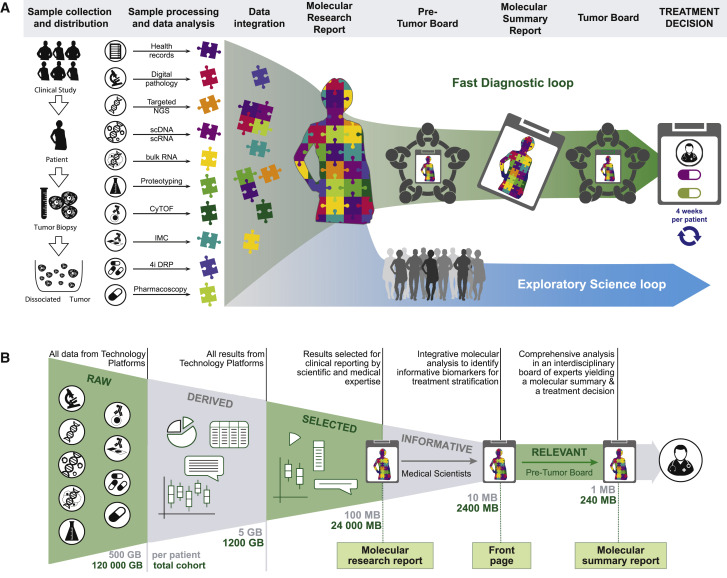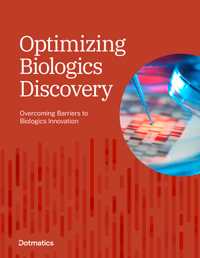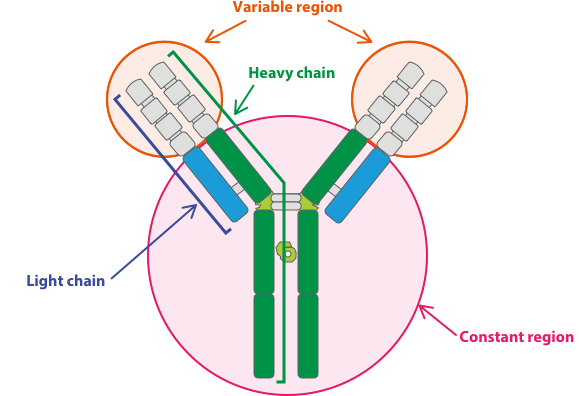While pharma has produced some incredible blockbusters, it has largely remained unremarkable at the individual patient level, with only an estimated 30% to 50% of patients fully responding to many leading conventional drugs.(1) One size does not, in fact, fit all. Some treatments just don’t work for some patients. And thus, a lengthy and costly cycle of trial-and-error often ensues, which can have grave consequences for some patients. On top of this, a one-size-fits-all approach is thought to waste tens of billions of dollars on ineffective treatments annually.(2)
Moving Away from One-Size-Fits-All Medicine
A gradual shift toward stratified medicine has been happening for years. With this approach, both prophylactic care and disease treatment are guided by grouping patients into broad categories, such as by disease subtype, biomarker presence, responders versus non-responders, clinical features, and the presence of single-gene mutations linked to monogenic disease. Precision medicine aims to move patient treatment to the next level.
What is Precision Medicine?
Precision medicine is rooted in the reality that the way patients respond to treatment is heavily affected by their individual genetic variability, their complex biology, and external factors. As such, precision medicine personalizes each patient’s treatment using accurate diagnosis, a thorough understanding of disease mechanisms and treatment options, and a multitude of individual patient factors, such a patient’s genetic and metabolic makeup, lab and test results, and even environmental conditions, lifestyle, and treatment preferences. In other words, it's about delivering “the right treatment to the right patient at the right time.” In some instances, this will be a matter of narrowing down which existing treatments options are best suited for a patient based on his or her profile and known data on how certain patients respond to certain drugs. In other cases, it might mean actually creating an individualized medicine, such as a personalized cell therapy or replacement tissue created just for that patient. While these examples are quite different, achieving either is a remarkable feat of data collection, analysis, predictive modeling, and clinical application.
The ultimate goal of precision medicine is to fully leverage complex multimodal data and advanced technologies so that patients receive the exact care they need—a marked difference from the historical paradigm in which it’s estimated that only about 60% of care is deemed warranted, 30% is considered wasteful, and 10% is labeled harmful.(3) Only once we accept and work with the personal expression of disease, taking into account the unique genotype (gene) and phenotype (physical expression) of every person, will we able to effectively treat diseases, such as cancer.
Precision Medicine Advances
While there is still a long road ahead for precision medicine, some promising advances have been made in recent years. We review a few highlights below.
Biomarkers
We are seeing growing development and use of biomarkers. These are informative biological measurements that have a proven link to specific factors, such as patient’s disease risk, potential drug response, or likelihood of experiencing adverse reactions. They include things like genetic mutation markers, blood pressure and glucose levels, lab measurements, imaging results, microbial presence, etc. The US Food and Drug Administration (FDA) categorizes biomarkers into one of four groups: molecular, histologic, radiographic, or physiologic. A growing list of biomarkers have been developed to help inform treatment decisions across a range of conditions, such as cancer, HIV, thromboembolism, psychiatric disorders, neurologic conditions, and infectious diseases. Biomarkers are also being used to inform early drug development efforts and clinical trial design in order to reduce timelines and increase the chances of success by better targeting treatments to those patients most likely to respond.(4-7)
Wearables
Wearable devices, such as smart watches, shoe inserts, wrist cuffs, chest straps, glucose monitors and pulse oxygen meters, are increasingly being used to continuously monitor patients’ biochemical, physiological, and movement endpoints outside the clinic. Data from these devices can help inform and monitor treatment choices, as well as influence preventative care measures. Collective data from wearables can also be used in the development of predictive algorithms that help guide more personalized treatment. Application is possible in many areas of healthcare, including metabolic, cardiovascular, gastrointestinal, neurologic, pulmonary and mental health; sleep and movement disorders; maternal and pre- and neonatal care; and monitoring of environmental exposures.(8)
Rare Diseases
While precision medicine first gained ground in oncology, where genetic knowledge about specific cancers is helping to target treatments, its use is rapidly expanding to other treatment areas—including notoriously difficult-to-treat rare diseases—thanks to better access to and application of big data, as well as increased accessibility of advanced technologies like genetic sequencing, artificial intelligence, and spatial genomics.(9)
“TuPro” Multi-omics Tumor Profiler
While genetic characterization of tumors has become increasingly common in cancer diagnosis and treatment, the TuPro integrated treatment-recommendation protocol developed by a Swiss research consortium moves a step farther. As shown in Figure 1, TuPro analyzes multiple additional “omics” data points, including a tumor’s high-resolution molecular profile and its ex vivo drug response—all within clinically relevant turnaround times. It is a great example of leveraging multiple data types to inform personalized treatment decisions.(10)

Figure 1: The TuPro approach leverages multiple advanced technologies to attain a more complete picture of patient tumors and their microenvironments, which helps deliver clinically relevant insights in short turnaround times. (Anja Irmisch, Ximena Bonilla, Stéphane Chevrier, et. al.Cancer Cell. 39(3) [2021]).
Undoubtedly, the expectations for precision medicine are high. Many believe that in addition to improving individual patient outcomes, precision medicine also holds promise to reduce overall treatment costs by eliminating ineffective or unnecessary medical care and by identifying high-risk patients who need early targeted care. In fact, a Harvard Business Review analysis projected that the elimination of unwarranted variations in medical care through use of precision medicine could potentially reduce the cost of patient management by at least 35%.(11) But, shifting paradigms to precision medicine will necessitate overcoming many hurdles, from technology and data integration challenges, to racial bias in genetic population data, to privacy, cost and accessibility concerns, to policy change, oversight and adoption logistics.
Multi-omic Data and Predictive Analysis in Precision Medicine
The high expectations for precision medicine were recently underscored in a report published by the US White House’s Office of Science and Technology Policy. The report is a follow-on to President Biden’s 2022 Executive Order on Advancing National Biotechnology and Biomanufacturing Innovation. Among the many “bold goals” presented in the report are two directed toward precision medicine.(12)
Collect Multi-Omic Data – “In 5 years, collect multi-omic measures in large cohorts with participants from diverse populations and identify which measures are most relevant to the diagnosis and management of at least 50 diseases with high incidence and impact.”(12)
Enable Personal Multi-Ome – “In 20 years, develop molecular classifications for diagnosis, prevention, and treatment to address leading causes of disease-related mortality in the U.S. and make these actionable with development of the $1,000 multi-ome.”(12)
The report’s focus on multi-omics data highlights the fact that making precision medicine a reality is not just a matter of adopting advanced technologies, like genome sequencing and biomarker screening, or performing deep assessment of clinical data, immune response, medical history, environmental factors, or behavioral traits. Instead, it’s about making sense of all that diverse data as a whole, not as individual parts. This means collating, analyzing, and connecting genomic and clinical data across huge population data sets, leveraging predictive tools like machine learning and artificial intelligence to identify trends, and then tying those insights back to the lab, where treatments are developed, and to individual patient-care settings, where treatment decisions are personalized. This is an incredibly challenging endeavor given the volume and variety of both data and experts involved in these processes.
Next week, we will dive deeper into this notion of iterative multi-omic data analysis, the challenges it presents, and why adopting an end-to-end R&D data platform that integrates diverse data types is an essential precursor to success.
References
Schork, N. Personalized medicine: Time for one-person trials. Nature (520), 609–611 (2015). https://doi.org/10.1038/520609a
Shlyankevich, A. “Precision Medicine Will Save Millions Of Lives And Billions Of Dollars But Only Through Collaboration Of Its Stakeholders.” Forrester. November 15, 2022. (Accessed April 10, 2023)
Braithwaite, J., Glasziou, P. & Westbrook, J. The three numbers you need to know about healthcare: the 60-30-10 Challenge. BMC Med (18)102 (2020). https://doi.org/10.1186/s12916-020-01563-4
Biomarkers. Toolkit for Patient-Focused Therapy Development. National Center for Advancing Translational Science (NCATS). U.S. Department of Health and Human Services - National Institute of Health. (Accessed April 6, 2023.)
Ventola CL. Pharmacogenomics in clinical practice: reality and expectations. P T. 36(7):412-50. (2011) PMID: 21931473; PMCID: PMC3171815.
About Biomarkers and Qualification. U.S. Food and Drug Administration. (Accessed April 6, 2023.)
Biomarker Qualification Program Educational Module Series—Module 2: How Biomarkers Can Improve the Drug Development Process. U.S. Food and Drug Administration. (Accessed April 6, 2023.)
Dunn, J., Runge, R. & Snyder, M. Wearables and the medical revolution. Future Medicine. 15(5) (2018). (Accessed April 6, 2023.)
Branca, M. A Rare Moment? Advances Spurring Rare Disease Diagnosis and Treatment. Inside Precision Medicine. (2021). (Accessed April 6, 2023.)
Anja Irmisch, Ximena Bonilla, Stéphane Chevrier, et. al. The Tumor Profiler Study: integrated, multi-omic, functional tumor profiling for clinical decision support. Cancer Cell. 39(3) (2021). https://doi.org/10.1016/j.ccell.2021.01.004.
Precision Medicine Could Have a Major Impact on Healthcare Outcomes and Costs. Harvard Business Review. (2018)
Bold Goals for U.S. Biotechnology and Biomanufacturing: Harnessing Research and Development to Further Societal Goals. The White House Office of Science and Technology Policy. March 2023.




